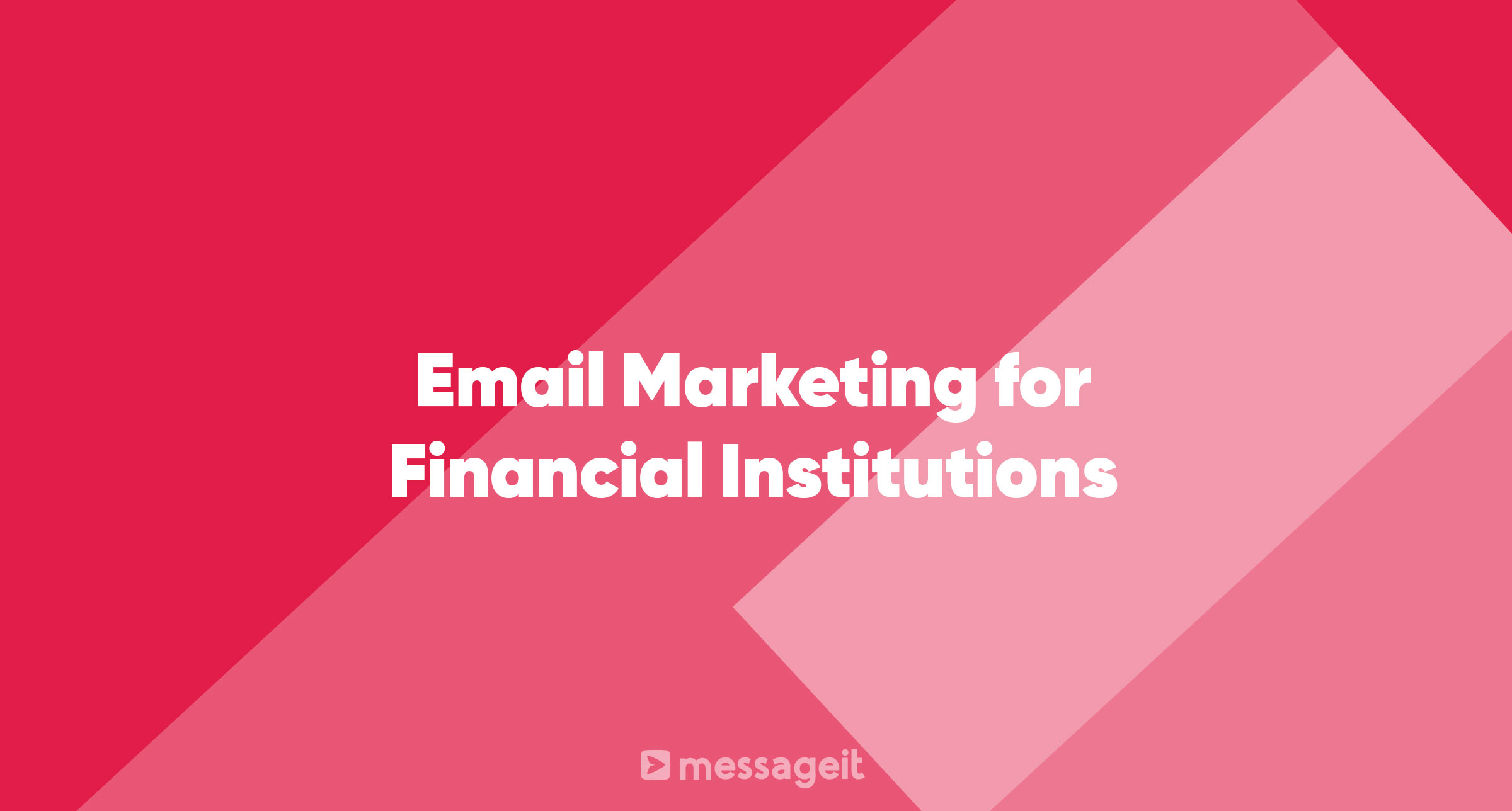Email marketing remains a potent tool for businesses to connect with their audience. For financial institutions, it offers a unique avenue to engage clients, promote services, and establish trust. However, the realm of email marketing for financial institutions demands a blend of tact, precision, and compliance. Let's explore the best practices, tips, and tricks to make your email marketing campaigns shine.
Understanding the Importance of Email Marketing for Financial Institutions
Before delving into the strategies, it's pivotal to grasp why email marketing is so vital for financial institutions.
Building Trust and Credibility
Financial institutions are the custodians of sensitive information and significant assets. Regular communication through emails can foster trust, showcasing the institution's expertise and reliability. Clients feel more connected when they receive consistent, valuable information, making them more likely to engage with the institution's services.
Cost-effective Promotion
Email marketing stands out as one of the most cost-effective promotional methods. With just a minimal investment, financial institutions can reach a vast audience, ensuring that their services and products are always in the limelight. Moreover, the ROI (Return on Investment) for email marketing is often higher than other marketing channels, making it a preferred choice for many institutions.
Personalized Client Engagement
Tailored email marketing can cater to individual client needs, ensuring content relevance and engagement. By understanding client preferences and behaviors, institutions can craft messages that resonate, leading to higher engagement rates and client satisfaction.
Tips and Tricks for Effective Email Marketing
With the significance clear, let's dive into actionable tips and tricks.
1. Prioritize Security and Compliance
For financial institutions, security and compliance aren't just essential; they're mandatory.
- Use Secure Platforms: Choose an email marketing platform that adheres to the highest security standards and regulations. This not only protects your institution's reputation but also ensures client data remains confidential.
- Stay Updated on Regulations: Financial sectors are often under strict regulations. Regularly update yourself on these regulations, ensuring that all email campaigns are compliant, especially concerning data protection and privacy laws.
2. Segment Your Audience
Different clients have varied needs. Segmenting ensures you address these differences.
- Demographics: Factors like age, location, and occupation can influence financial service preferences. Tailoring emails based on these demographics can increase engagement.
- Behavioral Data: Observing how clients interact with your emails provides invaluable insights. Their open rates, click patterns, and response times can guide future campaign refinements.
3. Craft Compelling Content
The essence of your email determines its success.
- Educational Content: Offering insights into financial trends or tips for managing finances can position your institution as a thought leader. Clients appreciate content that adds value to their lives.
- Promotional Content: While promoting new services or products is essential, the approach matters. Ensure it's informative and beneficial, rather than overtly salesy.
4. Optimize for Mobile
In today's world, mobile optimization isn't optional.
- Responsive Design: Many clients access emails on their mobile devices. Ensure your emails have a responsive design, adapting seamlessly to various screen sizes, providing a smooth user experience.
- Simplified Content: On mobile, less is more. Keep content concise, with clear calls to action and easily clickable links.
5. Personalize Your Emails
Personal touches can significantly enhance engagement.
- Use Client Data: Simple gestures like using the recipient's name can make emails feel more personal. Reference their specific needs or previous interactions to make content more relevant.
- Tailored Recommendations: Based on client data, offer tailored financial product or service recommendations, showing that you understand and cater to their unique needs.
6. Test and Analyze
Adaptation and improvement are keys to long-term success.
- A/B Testing: Regularly test different email formats, subject lines, and content types. A/B testing can provide insights into what resonates most with your audience.
- Analyze Metrics: Use analytics tools to monitor open rates, click-through rates, and conversions. This data can guide refinements, ensuring better future campaigns.
7. Maintain a Consistent Sending Schedule
Consistency breeds familiarity and trust.
- Set Expectations: Whether you're sending emails weekly, bi-weekly, or monthly, ensure clients know what to expect. This consistency can lead to higher open rates as clients anticipate your communication.
- Avoid Over-sending: While consistency is good, bombarding clients with emails can be counterproductive. Find a balance that keeps you in their minds without becoming a nuisance.
8. Encourage Feedback
Feedback is a goldmine for improvement.
- Surveys and Feedback Forms: Periodically send out surveys or feedback forms. This not only provides insights into client preferences but also makes them feel valued and heard.
- Act on Feedback: Merely collecting feedback isn't enough. Ensure you act on it, refining your strategies and letting clients know their opinions matter.
Conclusion
Email marketing for financial institutions is a dance of value provision, trust-building, and compliance adherence. By integrating the above tips and tricks, financial institutions can craft compelling email campaigns that resonate with clients, promote their offerings, and foster enduring relationships. In the intricate world of finance, trust is the currency, and effective email marketing is a significant asset in accumulating it.
